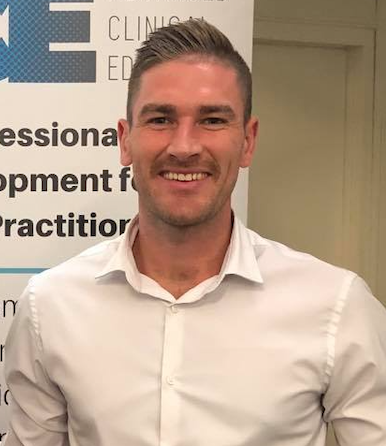The Fitness Zone

How To Be the MVP of the Massage Industry
Graduating as a massage professional is your ticket into the industry, but what, asks Bodine Ledden from Advanced Clinical Education, will set you apart from the rest and make you the Most Valuable Player?
Whether your goal is to work in a multidisciplinary team with high-performance athletes, or be fully booked in private practice managing musculoskeletal pain disorders, you need a strategy to get there. Arming yourself with more knowledge and skill is the leverage you need to be the best.
If you are anything like me, when you completed your training, you had more questions than answers and desperately wanted more knowledge. ‘How can I accurately assess the primary cause of my client’s pain?’, ‘What tools or treatment interventions can I add to my tool bag to be the best and get me to where I need to be in my career?’
In the real world, clients will invest their time and money into you in the hope that you will be able to take away their pain, improve their function or get them back to doing the things they love. That is a huge responsibility, and an even greater privilege. You have to build yourself into something worthy of that responsibility. Yes, gaining your qualification is a fantastic start, but it’s just the ticket to get onto the playing field. Now, you need to perform at your best. There are a couple of key ways to do so:
- Improve your knowledge of anatomy and pathophysiology
Although your studies have finished, your mind should never stray from opportunities to learn more. Your textbooks and course content will remain a valuable asset throughout your career. There are also countless new research articles being published all the time, many of which are free to access. This can equip you with the most up-to-date and credible information.
Better still, there are also webinars and courses available to improve your understanding of these topics, in which this new evidence is summarised and combined with clinical expertise and experience.
- Improve your understanding of a subjective and objective patient examination
More often than not, taking a thorough patient history can give you all the clues you need to unearth the cause of their pain. This requires you to ask not only the type and location of the pain, but also how it started, when it started, how long it has been going on, referral patterns, which movement or activities aggravate it or ease it, and more.
By the time you conduct a physical examination, you will have already gleaned most of the information you need. It is then time to confirm or deny your initial working diagnosis, and to rule in or rule out your list of differentials. Having a good understanding of anatomy and pathophysiology will give you the best chance to understand how different pathologies behave based on their symptoms. A physical assessment will help you to confirm or dismiss this.
OK, now you have identified what the pain is, how do you treat it? Ask yourself:
- Do you have enough skills in your arsenal to get the best result for the patient?
- Will they respond well to remedial massage techniques, or would they gain greater benefit from other interventions such as myofascial Dry Needling?
- Is it a joint-related problem that will respond better to a joint mobilisation technique?
- Is it a functional movement restriction that will respond to active myofascial interventions such as Functional Release Cupping?
- Is there a neural component that needs to be identified through conducting a neural screen and treated with neurodynamic mobilisations?
We can’t pick and choose who will come through our doors and hope that everyone will respond to the same treatment intervention. To be the MVP of your industry and be the ‘Go-To’ therapist, you need to broaden your knowledge and your skill set through continual professional development.
Formal professional development through courses, workshops, and conferences can provide you with the best training from the leaders in the profession. This should be complemented through informal professional development, such as attending webinars, listening to podcasts, and reading research papers and clinical case studies.
Professional development should never be a chore. Clearly identifying what you want – and what you need – to help the most people, will set you up for success.
What is going to make you stand out from the rest? Do you have your sights set on a goal? Have you identified gaps in your skills or knowledge? Have you created a strategy to get there, have you allocated a time frame to reach your goals.
The best athletes didn’t get to the top by chance. They picked their target, made a plan and then worked like crazy to make it happen.
– Bodine Ledden
Advanced Clinical Education (ACE) is an Industry Partner of AIF. You can check out their range of ongoing education courses for the massage industry here.
Read more articles
Disclaimer: Where Certificate III in Fitness, Cert III/Cert 3, or Fitness Coach is mentioned, it refers to SIS30321 Certificate III in Fitness. Where Certificate IV in Fitness, Cert IV/Cert 4, or Personal Trainer is mentioned, it refers to SIS40221 Certificate IV in Fitness. Where Master Trainer Program™ is mentioned, it refers to Fitness Essentials and SIS40221 Certificate IV in Fitness. Where Master Trainer Plus+ Program™ is mentioned, it refers to SIS30321 Certificate III in Fitness and SIS40221 Certificate IV in Fitness. Where Certificate IV in Massage or Cert IV/Cert 4 is mentioned, it refers to HLT42021 Certificate IV in Massage Therapy. Where Diploma of Remedial Massage is mentioned, it refers to HLT52021 Diploma of Remedial Massage.













